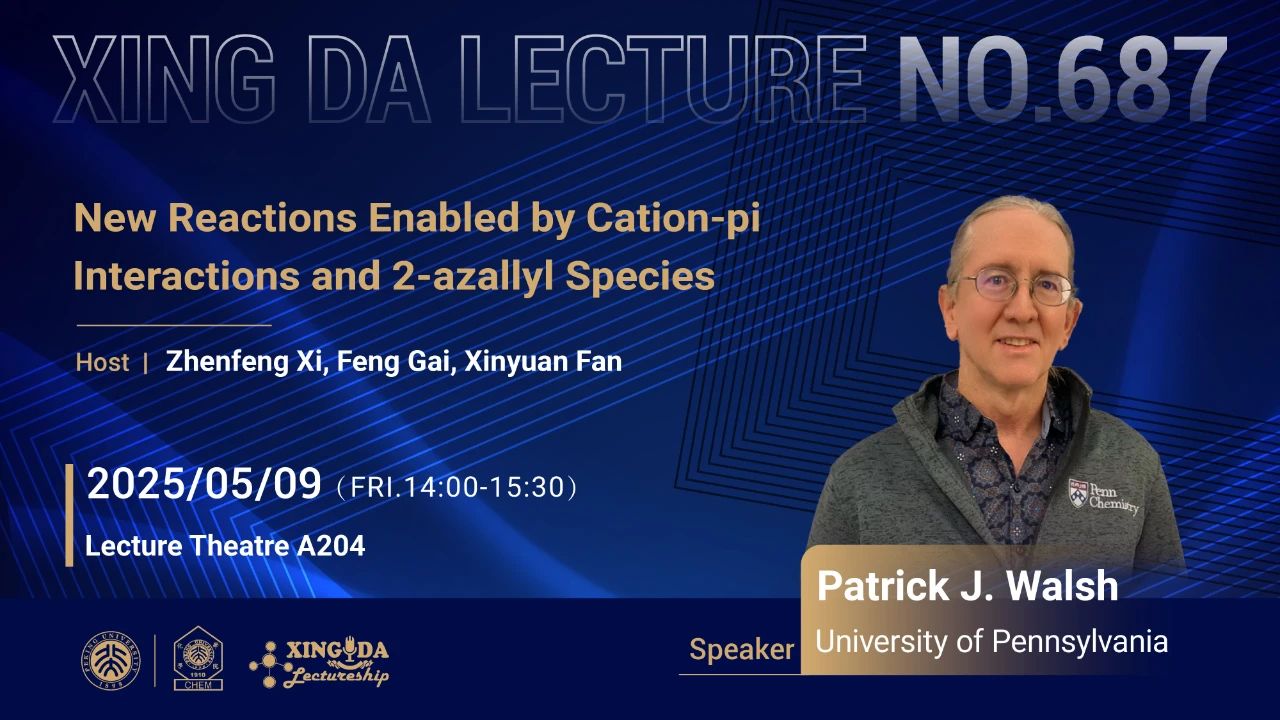
Abstract
Cation-p interactions are electrostatic forces that can be used to control reactivity and selectivity in reactions. In the first section, the involvement of cation-p interactions in C–C bond forming reactions will be discussed. In the area of transition metal catalyzed processes, reactions presented include the arylation of 2-benzyl furan and arylation of toluenes using heterobimetallic Pd/K catalysts. Transition metal-free reactions involving the use of toluenes in the aminobenzylation of aldehydes, conversion of 2-fluorotoluenes to indoles, and one-pot synthesis of alkynes from toluenes or acetamides and esters will be described and the synthesis of enynes (Eq. A). Our work on 2-azaallyl anion and radical intermediates will be presented, including the application of these intermediates in olefin difunctionalizations and enantioselective hydroelementations (Eq. B).
Biography
Prof. Patrick J. Walsh was born in San Diego, California. He received his B.A. from University of California, San Diego in 1986, and Ph.D. in 1991 from University of California, Berkeley with Prof. Robert G. Bergman. He moved back to San Diego for a postdoc with Prof. K. B. Sharpless at Scripps (1991–1994). From 1994–1999 he was an assistant professor at San Diego State University and professor at Centro de Graduados e Investigación, Instituto Tecnológico de Tijuana (Mexico) from 1996–1999. In 1999 he moved to the University of Pennsylvania where he is Professor of Inorganic Chemistry and the Rhodes-Thompson Professor of Chemistry. With Prof. Marisa Kozlowski, he co-authored Fundamentals of Asymmetric Catalysis. Walsh enjoys extensive collaborations with labs around the world.